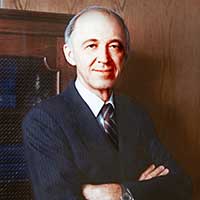
1959
Arlington State College (later renamed The University of Texas at Arlington) elevated to senior-college status and specifically calls for the creation of a new School of Engineering offering five baccalaureate degrees: aeronautical (later changed to aerospace), civil, electrical, industrial and mechanical engineering. Dr. Wendell Nedderman becomes founding dean of the School of Engineering (later elevated to the College of Engineering.) Dr. Jack Woolf, an engineer, becomes president of Arlington State College. Junior year in electrical engineering and mechanical engineering phased in.
























































